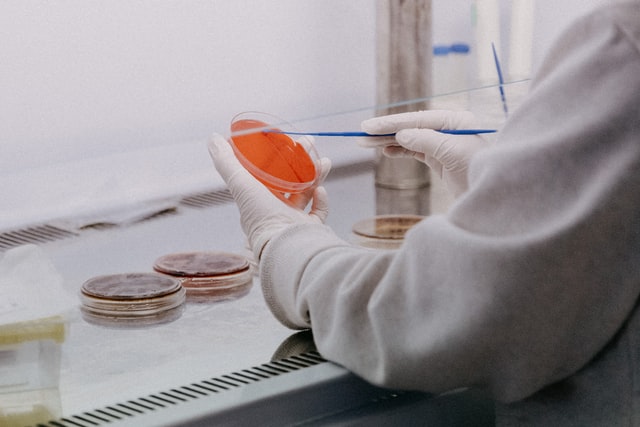PQ (Performance qualification) and the difference with process validation
The PQ (Performance Qualification) tests the functionality of the machine under standard production conditions. It is the first qualification phase in which the machine is tested “in process”, with the focus on the product and not just the equipment. PQ is part of the plant qualification activities and answers the questions: “Does the equipment produce a compliant product? Is the process stable and does it achieve/maintain the performance required/defined in the URs?”
Often, PQ is not given the importance it deserves because it is seen as a repetition of OQ but performed using a real product and its process parameters. Sometimes PQ can be carried out together with OQ, but testing the equipment under study in its entirety with the real product, or with placebo products that exactly imitate its characteristics. In other cases, the PQ can overlap (even partially) with the PV (Process Validation), but it must be considered that while the PV checks the specific operating parameters of a single product, the PQ must check the extreme operating parameters of equipment use, so that the PVs of several products can be used to make up the PQ of an equipment. A well-made PQ provides greater guarantees on the reliability of the equipment and will allow a certain flexibility when new production processes are introduced, especially if these have process parameters with values within the range already tested.
In terms of documentation, the PQ is not different from other types of qualification; there is a protocol that includes a description of the equipment, a description of the process, the control points, the frequencies, the acceptance limits, the management of deviations, etc., and a report that summarises the results obtained and any CAPAs carried out.
As we have already said, the PQ checks the reliability of the machine in the extreme limits of its use. For example, if we have to check the performance of a filling machine that can work with filling limits between 20 and 100 ml, the PQ will have to assess that the performance (speed, lack of defects…) remains constant both when working with a 20 ml filling and when using the 100 ml format. In this way it can be assumed that performance will be guaranteed even when working with the intermediate filling parameters.
Sometimes, however, companies carry out PQ on the basis of production needs/urgencies by testing specific formats that do not allow verification of the extreme working parameters of the equipment. This approach allows to close the qualification temporarily in a quick way, but requires subsequent verifications for the complete PQ by testing the following productions that have working parameters not included in those already tested.
The qualification of the machines is a prerequisite for the process validation which is a prerequisite for the marketing of each product.
Difference between PQ and process validation
In process validation, which is a prerequisite for the machine qualification, the production process is analysed. Each product has its own process validation (also called product validation in the past), which is necessary to obtain authorisation for production and marketing.
Process validation is necessary for a new production process but also for the verification of processes that undergo changes or are transferred to different sites/equipment than those initially used.
Production processes can be developed following a traditional approach or a continuous verification approach, based on this initial choice a different method can be used in process validation. For products developed with a traditional approach it would be preferable to have (if possible) a prospective validation before product certification. Retrospective validation is no longer acceptable.
A reduction of validation activities by means of a bracketing approach may be considered when considering modifications or transfers of processes of which one has great knowledge.
Different approaches can be used to perform process validation:
Concurrent validation
La convalida concorrente è da utilizzarsi solo in circostanze eccezionali qualora il rapporto rischio-beneficio per il paziente sia così alto da rendere accettabile di non completare il programma di convalida prima dell’inizio della produzione. La decisione di utilizzare questo approccio alla convalida deve essere giustificato, documentato e anche approvato da personale autorizzato. In questo caso i lotti prodotti potranno essere immessi sul commercio prima della conclusione di tutte le attività di convalida. Tutti i parametri dovranno chiaramente essere conformi e la qualità del prodotto sarà garantita dall’approvazione della Qualified Person.
Traditional validation
With this approach, the batches to be validated must be produced under the normal conditions expected to confirm the reproducibility of the process. The generally accepted minimum number of batches to be validated is three, a different number must be justified by risk analysis. Pilot batches with reduced batch sizes can sometimes also be considered, but not less than 10% of the standard batch. At the documentary level, the process validation must include a protocol in which the process is briefly described, the machines are described, and it is confirmed that the machines have been validated (sometimes the validation and machine qualification projects are linked). After that, the Critical Process Parameters are identified with their limits and Critical Qualitative Attributes. The expected acceptance limit of each CQA must be described. The analysis methods, in-process controls and any additional tests (with relative acceptance limits) must also be listed. Finally, the planned sampling plan and its rationale must be described. The batches to be validated must be consecutive and the results must be collated in the validation report with any deviations and corrective actions. All validation documentation must be clearly verified and approved by the relevant corporate functions.
Continuos Process Verification
This approach is newly introduced and applicable to products developed with Quality By Design. In this case, the extent of the validation (number of batches) and the number of samples is defined on a statistical basis by the developer with in-depth knowledge of the process. The control parameters (CPT and CQA) are already identified during the process development and design phase, and on the basis of these, it is decided which the critical points are and how they are to be verified. This check can also be continuous, so as to assess the product’s drifts over time. This method requires in-depth knowledge of the process and applying it to an existing process or one designed by others is very complicated. The documentary part is similar to that of traditional validation.
Hybrid approach
When there is in-depth knowledge of a process due to the manufacturer’s experience and historical batch data, a hybrid approach between traditional and Continuous process verification can be used. This approach can also be used following a change to a process that was initially validated with a traditional approach.
The documentation of a process validation has to be available to the authorities for the whole life of the product and therefore has to be kept for the whole shelf-life of the last batch produced. Considering also the possibility of receiving complaints from the market about the batch, such documentation is generally kept for 10 years (time to file a lawsuit) as a precautionary measure.

Photo by Trnava University on Unsplash



